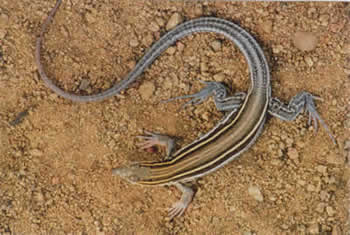As a consequence of EHL’s marshaling of scientific evidence, a peer review panel issued a critical report on the Vegetation Treatment Program, triggering a revision.

In 2013, the California Department of Forestry and Fire Protection (CAL FIRE) issued a draft environmental impact report (DEIR) for its Vegetation Treatment Program, or VTP. It sought authority on a statewide basis to remove sage scrub and chaparral (through burning, herbicides, herbivores, clearing, and mastication) on a large scale, ostensibly to protect structures built in high fire hazard zones but also to promote “ecosystem health.” The scientific evidence, however, shows that treatments immediately around structures plus limited fire breaks are the only effective methods to protect life and property and that landscape-level clearing of shrubland does nothing to promote ecosystem health. Indeed, conversion to flammable weeds is a likely outcome.
EHL organized a team of lawyers and scientists to provide comments on the draft VTP, with fire ecologists, including from the Conservation Biology Institute, playing key roles. Along with our partners in California Native Plant Society and California Chaparral Institute, we advocated for a more scientifically up-to-date program.
As a result, the State Legislature intervened and mandated a peer review. Following two public workshops and also site visits, the peer review panel – convened by UC Berkeley’s Fire Science Consortium – recommended a ground-up revision. The main recommendations were to 1) reformulate program objectives to the narrower task of public safety (instead of ecosystem health) and 2) tailor treatments to the diverse vegetation communities in our state. It also recommended focusing treatments within shrublands to the wildland-urban interface rather than on a landscape basis. Encouragingly, CAL FIRE has embraced the need for revisions and has indicated that a new process will have opportunity for stakeholder input.
EHL commends the Legislature and the Fire Science Consortium for their roles, and commends CAL FIRE for its constructive approach to improving the plan. We look forward to working with CAL FIRE on a scientifically defensible program that provides public safety with the least environmental harm.


